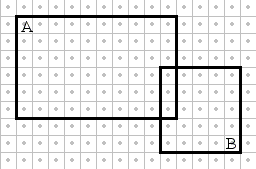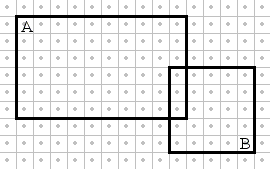Conditional Probability and Independent Events
The applet below presents an interactive tool that helps grasp the definition and the significance of conditional probabilities and independent events.
| What if applet does not run? |
A sample space consists of an array of Nx × Ny dots. The dots are all equiprobable. Two rectangles represents two events, A and B, that can be moved or modified by dragging their sides or corners. Five probabilities are shown in the right side of the applet, P(A), P(B), P(A∩B), P(A|B), P(B|A). The latter two have been defined as
P(A|B) = P(A∩B) / P(B),
P(B|A) = P(A∩B) / P(A).
The events A and B are said to be independent provided
P(A|B) = P(A), or, which is the same
P(B|A) = P(B).
Neither the probability of A or B is affected by the occurrence (or a occurrence) of the other event. A symmetric way of expressing the same fact is this
P(A∩B) = P(A) P(B).
As an example, the events depicted below are independent on the 25×20 sample space:

From the definition, for the dependency or independency of events the total frequencies of the events are as important as their relative frequencies. Switching (in the above example) to the sample space 24×20, say, but by keeping the relative probabilities P(A|B) and P(B|A) intact, turns the dependency on:

- What Is Probability?
- Intuitive Probability
- Probability Problems
- Sample Spaces and Random Variables
- Probabilities
- Conditional Probability
- Dependent and Independent Events
- Conditional Probability and Independent Events
- Mutually (Jointly) Independent Events
- Independent Events and Independent Experiments
- Algebra of Random Variables
- Expectation
- Probability Generating Functions
- Probability of Two Integers Being Coprime
- Random Walks
- Probabilistic Method
- Probability Paradoxes
- Symmetry Principle in Probability
- Non-transitive Dice
|Contact| |Front page| |Contents| |Probability|
Copyright © 1996-2018 Alexander Bogomolny
73569663
